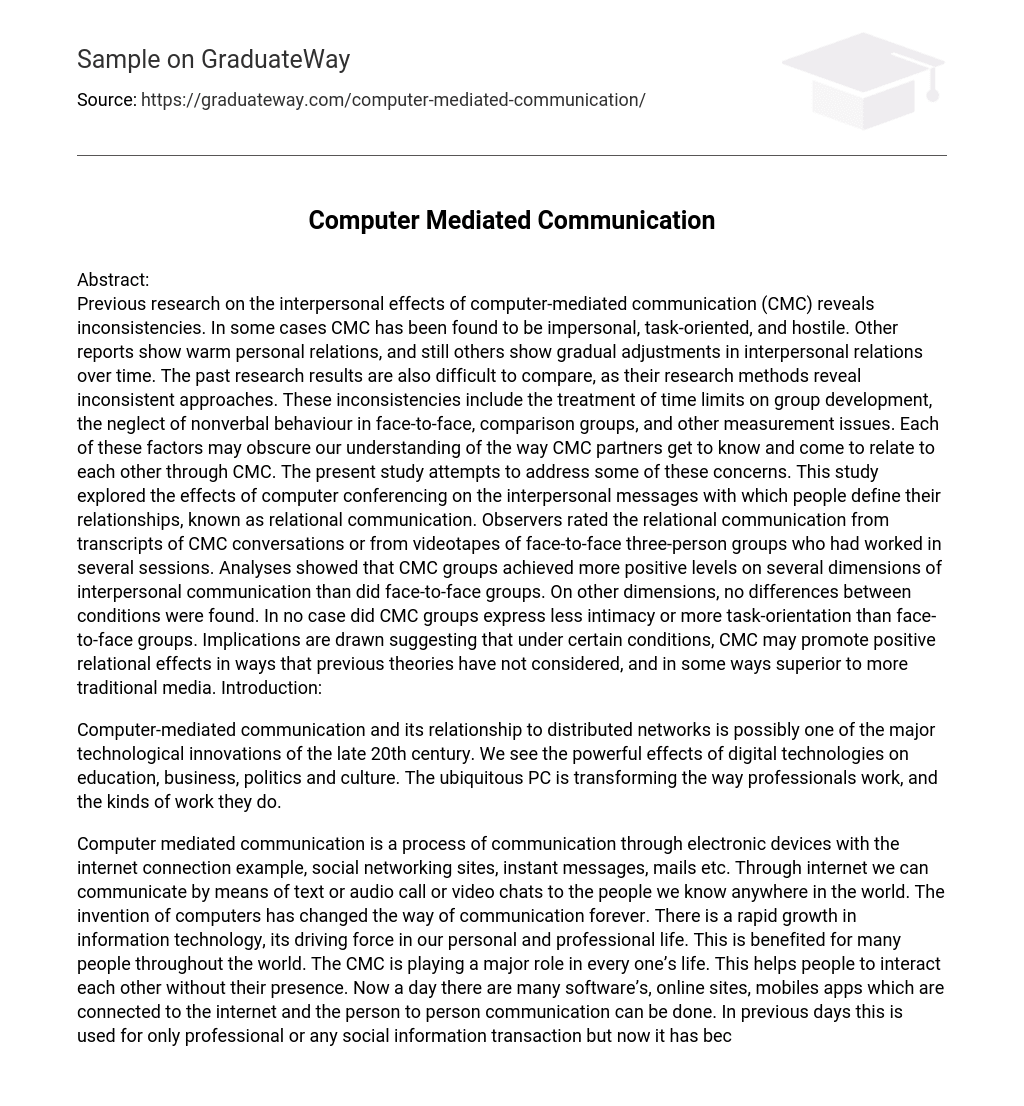Abstract:
Previous research on the interpersonal effects of computer-mediated communication (CMC) reveals inconsistencies. In some cases CMC has been found to be impersonal, task-oriented, and hostile. Other reports show warm personal relations, and still others show gradual adjustments in interpersonal relations over time. The past research results are also difficult to compare, as their research methods reveal inconsistent approaches. These inconsistencies include the treatment of time limits on group development, the neglect of nonverbal behaviour in face-to-face, comparison groups, and other measurement issues. Each of these factors may obscure our understanding of the way CMC partners get to know and come to relate to each other through CMC. The present study attempts to address some of these concerns. This study explored the effects of computer conferencing on the interpersonal messages with which people define their relationships, known as relational communication. Observers rated the relational communication from transcripts of CMC conversations or from videotapes of face-to-face three-person groups who had worked in several sessions. Analyses showed that CMC groups achieved more positive levels on several dimensions of interpersonal communication than did face-to-face groups. On other dimensions, no differences between conditions were found. In no case did CMC groups express less intimacy or more task-orientation than face-to-face groups. Implications are drawn suggesting that under certain conditions, CMC may promote positive relational effects in ways that previous theories have not considered, and in some ways superior to more traditional media. Introduction:
Computer-mediated communication and its relationship to distributed networks is possibly one of the major technological innovations of the late 20th century. We see the powerful effects of digital technologies on education, business, politics and culture. The ubiquitous PC is transforming the way professionals work, and the kinds of work they do.
Computer mediated communication is a process of communication through electronic devices with the internet connection example, social networking sites, instant messages, mails etc. Through internet we can communicate by means of text or audio call or video chats to the people we know anywhere in the world. The invention of computers has changed the way of communication forever. There is a rapid growth in information technology, its driving force in our personal and professional life. This is benefited for many people throughout the world. The CMC is playing a major role in every one’s life. This helps people to interact each other without their presence. Now a day there are many software’s, online sites, mobiles apps which are connected to the internet and the person to person communication can be done. In previous days this is used for only professional or any social information transaction but now it has become a personal, everybody has their own PC’s with full length internet or wife connection to communicate with the friends or family. It offers a means of communication for disabled people like deaf and dumb. The CMC is mainly to build up our social relationships. Currently there are many social networking sites like twitter, Facebook, Google+ these become a high demand in communication. There are many other chat boxes like Gmail, Gtalk and yahoo messenger, where people can chat without any disturbance.





